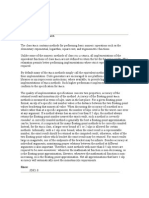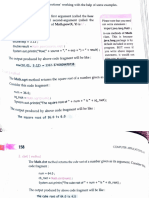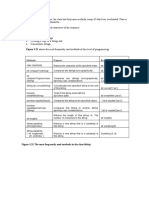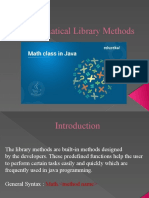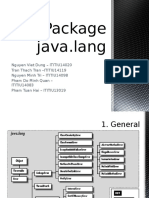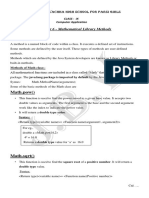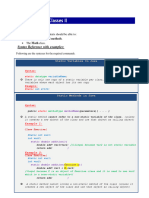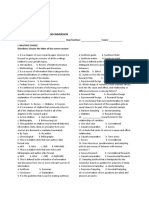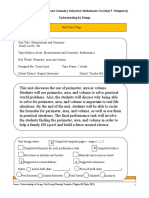0% found this document useful (0 votes)
8 views4 pagesMatematical Function
The java.lang.Math class in Java provides static methods for basic numeric operations, including exponential, logarithmic, square root, and trigonometric functions, as well as constants like Math.PI and Math.E. It is widely used in complex calculations, scientific applications, game development, and data analysis. Key methods include abs(), sqrt(), pow(), max(), min(), rounding functions, trigonometric functions, and random number generation.
Uploaded by
advikgirotraCopyright
© © All Rights Reserved
We take content rights seriously. If you suspect this is your content, claim it here.
Available Formats
Download as DOCX, PDF, TXT or read online on Scribd
0% found this document useful (0 votes)
8 views4 pagesMatematical Function
The java.lang.Math class in Java provides static methods for basic numeric operations, including exponential, logarithmic, square root, and trigonometric functions, as well as constants like Math.PI and Math.E. It is widely used in complex calculations, scientific applications, game development, and data analysis. Key methods include abs(), sqrt(), pow(), max(), min(), rounding functions, trigonometric functions, and random number generation.
Uploaded by
advikgirotraCopyright
© © All Rights Reserved
We take content rights seriously. If you suspect this is your content, claim it here.
Available Formats
Download as DOCX, PDF, TXT or read online on Scribd
/ 4
